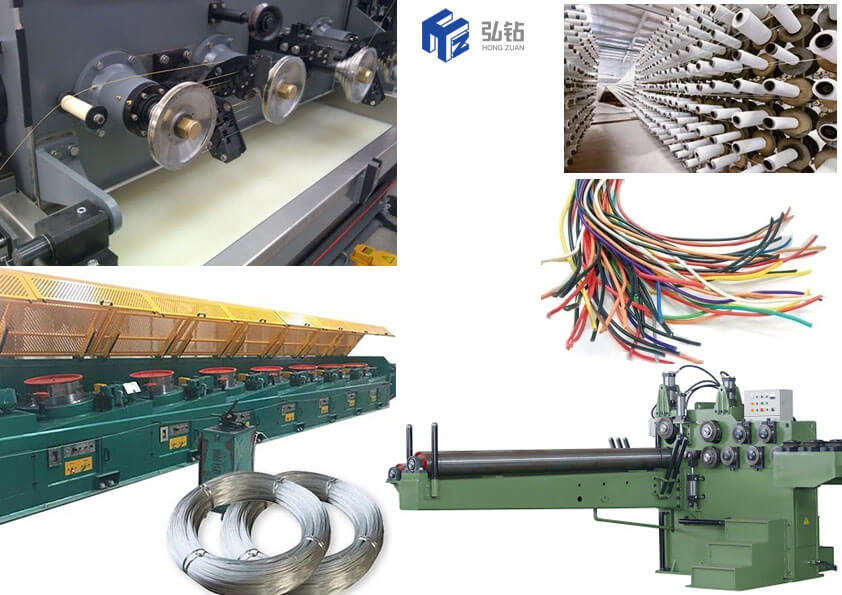1 What’s wire drawing?
The wire drawing process is quite simple in concept.
Wire drawing is a metalworking process used to reduce the cross-section of a wire by pulling the wire through a single, or series of, drawing dies. There are many applications for wire drawing, including electrical wiring, cables, tension-loaded structural components, springs, paper clips, spokes for wheels, and stringed musical instruments. Although similar in process, drawing is different from extrusion, because in drawing the wire is pulled, rather than pushed, through the die. Drawing is usually performed at room temperature, thus classified as a cold working process, but it may be performed at elevated temperatures for large wires to reduce forces
2 What’s wire drawing dies?
Wire drawing dies are tools with highly-polished, specially-shaped holes through which wire is drawn to reduce its diameter. They have a metal case and a nib made of:
tungsten carbide (TC), polycrystalline diamond (PCD), natural diamond
Specifications
When selecting wire drawing dies, wire material and drawing parameters are important specifications to consider. Typically, wire materials include:
copper
stainless steel
aluminum alloy steel
tungsten
galvanized high-carbon steel
gold
silver
stainless steel
low-carbon steel
molybdenum
nickel
Drawing parameters include measurements such as inlet diameter, bell radius, entrance angle, approach angle, bearing, and back relief. Elongation, the ratio of length after drawing to the length prior to drawing, is also an important consideration when choosing wire drawing dies.
Types
There are many different types of wire drawing dies. Examples include standard wire drawing dies, PCD wire drawing dies, TC wire drawing dies, and enameling wire drawing dies. Standard wire drawing dies have a well-defined reduction angle that reduces drawing force and provides uniform die-formation with a consistent surface finish. PCD wire drawing dies use polycrystalline diamond (PCD), a synthetic material that provides superior resistance to cracking and wear. TC wire drawing dies are made from tungsten carbide, an extremely hard and scratch-resistant material that is often used in tool bits. Tungsten carbide wire drawing dies are often used to draw thicker wires, and in applications where PCD dies are too expensive. Enameling wire drawing dies are used with enameled wires and may feature internal geometries that are suitable for very small wire sizes.
Applications
Wire drawing dies are used with a variety of wire drawing tools and equipment. Pull-in dogs are used to grip a wire’s end as it enters the die. After the pull-in dog is fastened to the block, the wire is drawn through the die. Wire drawing dies are also used with both single-block and multiple-block machines. With single-block equipment, the wire passes through a die and collects on a standard block. With multiple-block machines, the wire is pulled through a die and wrapped around a slightly-tapered block. The wire then moves upward onto collector pins and exits the upper section to reduce back tension. Typically, inverted drawing machines or gravity blocks are used with coarser wire sizes, or to draw wire that requires superior surface quality. Wire drawing dies for these machines are available from a variety of suppliers.
3 What we can do for you?
Zhuzhou Hongtong Tungsten Carbide Co.,Ltd make highly designated Carbide Wire Drawing Dies especially designed for wire drawing industries. Our dies are used for M.S, S.S wire, Brass, copper and aluminum wire drawing. Beside the common uses our dies are also applicable in the design of MIG wires and Co2 wires. The wire drawing dies are made by using high quality raw materials that are sourced from known vendors. All the vendors are linked with us over a long period of time. We bother in effective and timely delivery of product once ordered by our customers.
we are leading supplier of Wire Drawing Dies from China.

